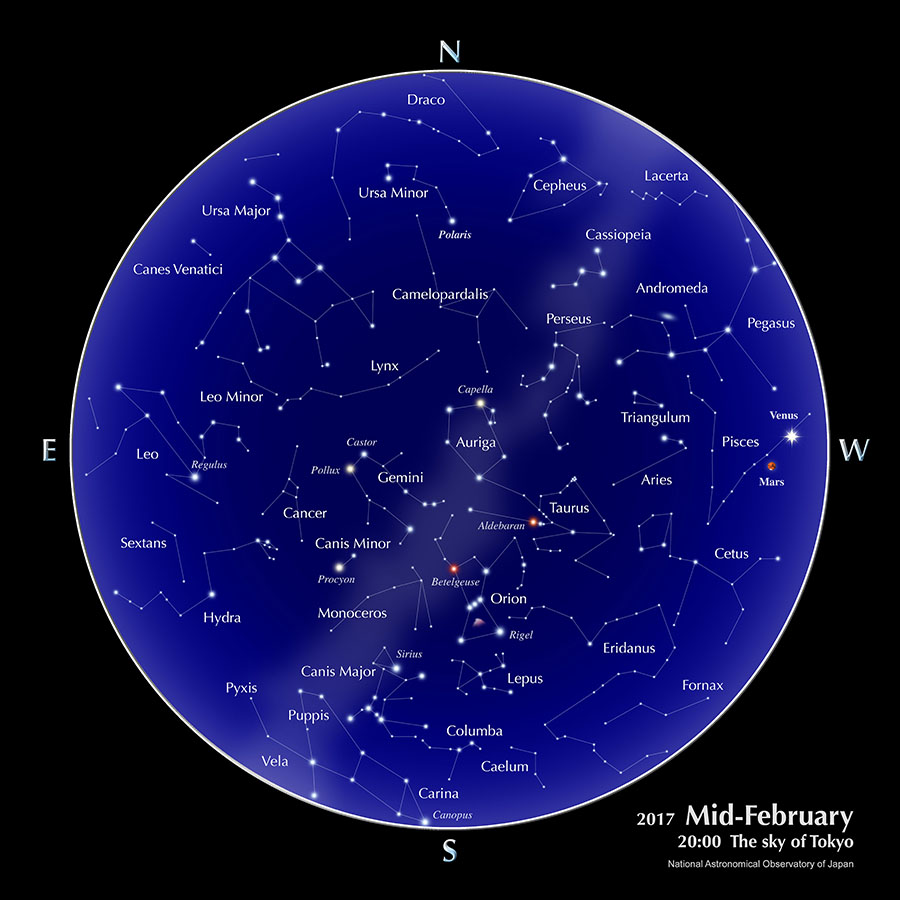The sky of Tokyo, Calendar, Planets (February, 2017)
The sky of Tokyo

Calendar (February)
| 4 | First Quarter Moon |
| 7 | Jupiter at stationary point |
| 11 | Full Moon / National Foundation Day [Kenkoku-Kinen-no-hi] (national holiday) |
| 17 | Venus at Greatest Brillancy |
| 19 | Last Quarter Moon |
| 26 | Annular solar eclipse (not visible from Japan) Reference: Local Prediction of the Solar Eclipse / New Moon |
The days for the peak activities of the meteor showers are based on the predictions of IMO(International Meteor Organization).
Planets
- Mercury
- Mercury is located low in the southeastern sky just before sunrise, but its apparent location is close to the Sun, so it is not suited for observation.
- Venus
- Venus shines brightly in the southwestern to western sky after sunset. It sets after 20:00 as seen from Tokyo. Its brightness is -4.6 magnitude. Venus reaches its greatest brilliancy on the 17th.
- Mars
- Mars is located in the constellation Pisces, and moves east, skimming the constellation Cetus. It can be seen in the southwestern to western sky after sunset. It sets around 21:00 as seen from Tokyo. Its brightness is 1.1 to 1.3 magnitude.
- Jupiter
- Located in the constellation Virgo, Jupiter rises after 22:00 in the beginning of the month and after 21:00 in the last part of the month as seen from Tokyo. Jupiter reaches its stationary point on the 7th. Before that Jupiter moves slowly to the east (direct motion), and after passing the stationary point it moves to the west (retrograde motion). At the stationary point it seems to stop with respect to the stars. Its brightness is -2.1 to -2.3 magnitude.
- Saturn
- From the beginning to the middle of the month, Saturn is located in the constellation Ophiuchus. It moves slowly to the east and at the end of the month, it moves into the constellation Sagittarius. Saturn can be seen in the southeastern to southern sky before sunrise. Its brightness is 0.5 magnitude.
Source: Ephemeris Computation Office, NAOJ
With the “Sky Viewer” you can easily explore the appearance of a typical urban night sky (planets and constellations are visible). The Celestial Phenomena section of the glossary explains the planetary phenomena terms: greatest elongation, opposition, conjunction, stationary, etc.